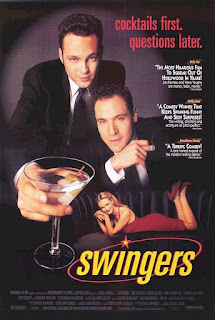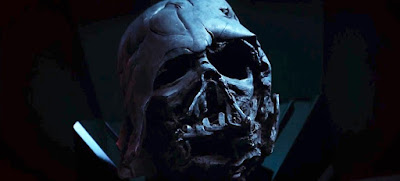by tryanmax
I’ve got to hand it to Disney. I think they’ve really pulled one over on the identity politics crowd. With their latest smash-hit Zootopia, the studio has given the usually unquellable race-baiters, gender-warriors, and plain ol’ Disney haters an allegorical placebo to shut them up. So satisfied are they that Disney finally “gets it” that one outlet went so far as to regard the new film as an apology for Song of the South, a film known almost solely by distorted reputation alone.
I won't be discussing the plot, which is a twisty noir-ish tale, directly. As such, this article assumes the reader has already seen the movie. For a film synopsis, see here.
That’s a good segue for how Zootopia creates the appearance of handling identity issues. In one scene, a fox does just that, grabbing and handling a sheep’s bouffant while delightedly remarking how fluffy it is. His rabbit companion admonishes him that he can’t do that. This is clearly a reference to the supposed problem of white people always touching black people’s hair.
The script is peppered with little nods to so-called “micro-aggressions” such as this. The police force has a “Mammal Inclusion Initiative” which is clearly an affirmative action program. Judy Hopps, the beneficiary of said program and the first-ever rabbit on the force, asserts that she is not “some token bunny.” In another instance, she informs a cheetah that it’s okay for rabbits to call other rabbits cute, but not for other species. There’s a scene where an elephant store clerk asserts his right to refuse service to a fox. The assistant mayor believes she is only on board to court the “sheep vote.” The terms “articulate” and “patronizing” are conspicuously dropped into a conversation. The list goes on.
All of this is meant to signal that Disney is in-the-know on issues that virtually everyone is already aware of anyway. Otherwise the gags wouldn’t play. So, because Disney can demonstrate their consciousness, some have assumed that Disney is actually addressing the issues. But like the (literal) political animals in their film, Disney actually dodges the question entirely by re-framing it.
Again, Zootopia is full of these types of gags. Being a rabbit, Judy has 225 brothers and sisters. Her sidekick, Nick, is a fox and a street hustler. Judy tries questioning an elephant who can’t remember anything. The city’s mayor is a lion. The mob-boss Mr. Big is revealed to be a tiny shrew. A group of lemmings mindlessly follow each other in buying popsicles. A hippie yak is unwashed and swarming with flies. This is Blazing Saddles style humor in a form that can slide past trigger-warning and safe-space sensibilities.
The very makeup of Zootopia (the city within the movie) itself is a gag. It is as much a theme park as a city and it is deliberately segregated by species, just as if it were a human-run zoo. Districts such as Tundratown and Sahara Square provide appropriate habitats for different species, while a neighborhood like Little Rodentia scales the urban landscape to its tiny residents. It’s both humorous and sensible, but it pushes aside any pat solutions to identity issues.
At first, it looks like rabbits and other prey are the oppressed minority. After all, historically they suffered at the hands of predators, as the opening scene points out. But that isn’t the case. It turns out that Zootopia is 90% prey, and they are often openly prejudiced against predators. Yet, somehow, the mayor is a lion and predators occupy positions alongside prey everywhere. In most cases, it actually appears that size matters most, with large species like buffalo and bears filling the police ranks and big mammals generally throwing their weight around. Driving this home early in the film, the assistant mayor buddies up to Judy to say, “Us little guys have to stick together.”
The more you parse the animal groupings in the film, the more complicated it gets. Any attempt to draw straight lines between Zootopia and the real world is going to get uncomfortable really fast. As I already laid out, in Zootopia, minority = predator = savage. That equation ends careers if brought into the real world.
As I see it, the point is not to draw lines between the cartoon world and the real world, as tempting as it may be. Instead, by sidestepping the usual identity markers Zootopia is actually able to tell a compelling story while inserting a non-polarizing message of mutual respecting in a way that is better than simply mirroring current events.
[+] Read More...
I’ve got to hand it to Disney. I think they’ve really pulled one over on the identity politics crowd. With their latest smash-hit Zootopia, the studio has given the usually unquellable race-baiters, gender-warriors, and plain ol’ Disney haters an allegorical placebo to shut them up. So satisfied are they that Disney finally “gets it” that one outlet went so far as to regard the new film as an apology for Song of the South, a film known almost solely by distorted reputation alone.
Spoiler AlertAll Disney really did, though, is recognize identity politics as a thing. The only message they conveyed with Zootopia on the matter is probably the best one that anyone can actually offer. Simply, “It’s complicated.” Let’s take a look at what they did.
I won't be discussing the plot, which is a twisty noir-ish tale, directly. As such, this article assumes the reader has already seen the movie. For a film synopsis, see here.
Lookin’ GoodIn more than one way, Zootopia is all about appearances. For one, it is a visual treat to the eyes. Disney imagination is on full display in creating a world where animals of every species, from tiny hamsters and mice to giant giraffes and hippos, live alongside one another in an urban landscape. I remarked more than once how the characters looked so fluffy on screen that I wished I could reach out and touch them.
That’s a good segue for how Zootopia creates the appearance of handling identity issues. In one scene, a fox does just that, grabbing and handling a sheep’s bouffant while delightedly remarking how fluffy it is. His rabbit companion admonishes him that he can’t do that. This is clearly a reference to the supposed problem of white people always touching black people’s hair.
The script is peppered with little nods to so-called “micro-aggressions” such as this. The police force has a “Mammal Inclusion Initiative” which is clearly an affirmative action program. Judy Hopps, the beneficiary of said program and the first-ever rabbit on the force, asserts that she is not “some token bunny.” In another instance, she informs a cheetah that it’s okay for rabbits to call other rabbits cute, but not for other species. There’s a scene where an elephant store clerk asserts his right to refuse service to a fox. The assistant mayor believes she is only on board to court the “sheep vote.” The terms “articulate” and “patronizing” are conspicuously dropped into a conversation. The list goes on.
All of this is meant to signal that Disney is in-the-know on issues that virtually everyone is already aware of anyway. Otherwise the gags wouldn’t play. So, because Disney can demonstrate their consciousness, some have assumed that Disney is actually addressing the issues. But like the (literal) political animals in their film, Disney actually dodges the question entirely by re-framing it.
It’s Funny ‘cos It’s TrueProbably the most memorable scene in the entire film is the one that takes place in the DMV. Judy Hopps is in a hurry but, to her chagrin, the entire office is staffed by sloths. She actually exclaims, “They’re all sloths!?” because she naturally assumes all sloths are slow and, well, they are. It’s actually amazing how well this works for laughs, not just once, but over a dozen times in the course of a couple minutes. At the same time, it totally reinforces that stereotypes do have a basis in real trends. Later, the film also breaks the stereotype when the main sloth is pulled over for street racing, but this is still in service to the same gag. Sloths are funny ‘cos they’re slow, but they’re even funnier if they’re fast.
Again, Zootopia is full of these types of gags. Being a rabbit, Judy has 225 brothers and sisters. Her sidekick, Nick, is a fox and a street hustler. Judy tries questioning an elephant who can’t remember anything. The city’s mayor is a lion. The mob-boss Mr. Big is revealed to be a tiny shrew. A group of lemmings mindlessly follow each other in buying popsicles. A hippie yak is unwashed and swarming with flies. This is Blazing Saddles style humor in a form that can slide past trigger-warning and safe-space sensibilities.
The very makeup of Zootopia (the city within the movie) itself is a gag. It is as much a theme park as a city and it is deliberately segregated by species, just as if it were a human-run zoo. Districts such as Tundratown and Sahara Square provide appropriate habitats for different species, while a neighborhood like Little Rodentia scales the urban landscape to its tiny residents. It’s both humorous and sensible, but it pushes aside any pat solutions to identity issues.
Where da White Bunnies At?If there is one thing about Zootopia that has the identity politics crowd grumbling, it’s that they can’t quite figure out which animals represent which group of humans. I think that’s by design. Even though the animals of Zootopia inhabit a world very much like ours, even featuring similar political issues, it’s impossible to say that certain animals represent certain groups of people. Rather, all the usual signifiers are jumbled up.
At first, it looks like rabbits and other prey are the oppressed minority. After all, historically they suffered at the hands of predators, as the opening scene points out. But that isn’t the case. It turns out that Zootopia is 90% prey, and they are often openly prejudiced against predators. Yet, somehow, the mayor is a lion and predators occupy positions alongside prey everywhere. In most cases, it actually appears that size matters most, with large species like buffalo and bears filling the police ranks and big mammals generally throwing their weight around. Driving this home early in the film, the assistant mayor buddies up to Judy to say, “Us little guys have to stick together.”
The more you parse the animal groupings in the film, the more complicated it gets. Any attempt to draw straight lines between Zootopia and the real world is going to get uncomfortable really fast. As I already laid out, in Zootopia, minority = predator = savage. That equation ends careers if brought into the real world.
As I see it, the point is not to draw lines between the cartoon world and the real world, as tempting as it may be. Instead, by sidestepping the usual identity markers Zootopia is actually able to tell a compelling story while inserting a non-polarizing message of mutual respecting in a way that is better than simply mirroring current events.


















































